With the picturesque settings of Nagaland as the backdrop, the Hornbill Music Festival has grown to be one of the main highlights of Northeast India’s cultural and musical calendar. Within the bigger Hornbill Festival, this one-of-a-kind music festival highlights a range of musical genres—from modern rock and pop to traditional Naga melodies. Spirited music among the natural splendour of the area creates a much-remembered event. The varied blend of local and international sounds, which attracts music lovers from all over India and beyond, has also helped to explain its growing appeal.
Location Of The Hornbill Music Festival
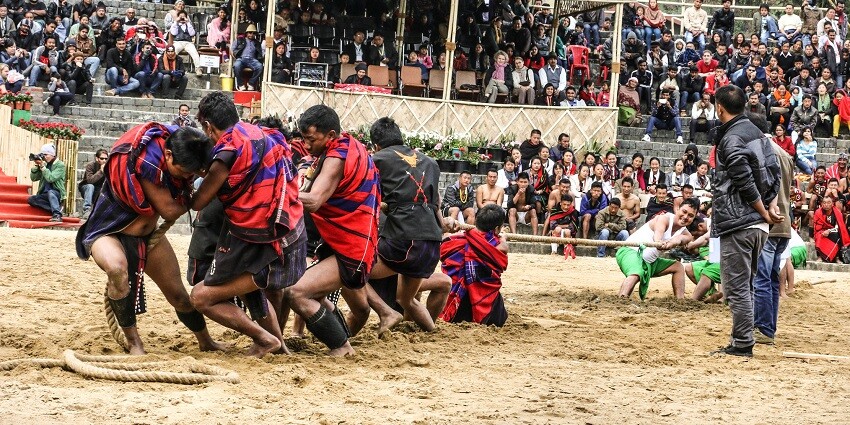
Photo: Mitu Gogoi / Wikimedia Commons
The Hornbill Music Festival is held in Kohima, the capital of Northeast India’s state of Nagaland. Kohima, well-known for its rich cultural legacy and breathtaking mountain backdrop, is the perfect venue for this musical grandiose. Usually, the celebration takes place around 12 km from Kohima City at the Naga Heritage Village, Kisama. Surrounded by undulating hills and verdant forests, this idyllic spot provides the ideal mix of natural beauty and cultural value.
Suggested Read: Scenic Places To Visit Near Kohima That Showcase Nature And Local Culture
How To Reach Hornbill Music Festival At Kohima
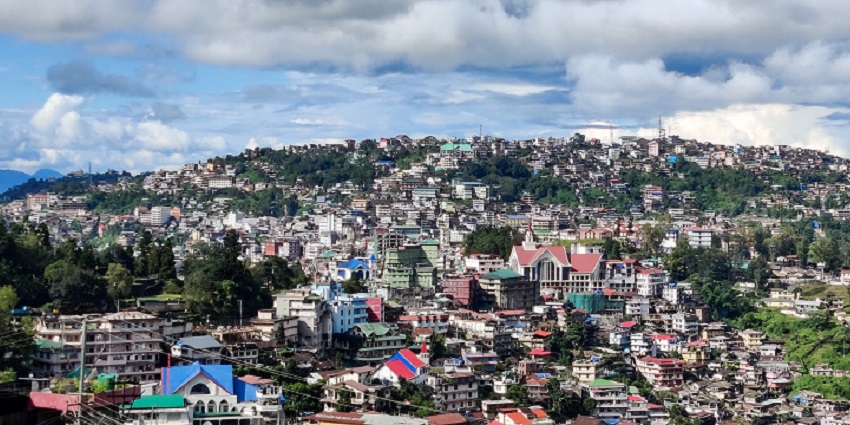
Photo: The Anonymous Earthling / Wikimedia Commons
There are several ways to reach Kohima for the Hornbill Music Festival:
By Air: The nearest airport is Dimapur Airport, located about 74 kilometres from Kohima. From Dimapur, visitors can take a taxi or a shared vehicle to reach Kohima. The journey offers scenic views of Nagaland’s countryside.
By Road: Kohima is well-connected by road to major cities in the Northeast. Regular bus services and shared taxis are available from Guwahati, Shillong, and other nearby cities. The journey, though long, provides breathtaking views of the region’s landscapes.
By Rail: The nearest railway station is in Dimapur. From there, visitors can hire a taxi or take a bus to Kohima. The road journey from Dimapur to Kohima takes about 3-4 hours and offers beautiful vistas of the Naga Hills.
Top Places In Nagaland Celebrating The Hornbill Music Festival
Here are the places in Nagaland celebrating the Hornbill Music Festival:
1. Kohima
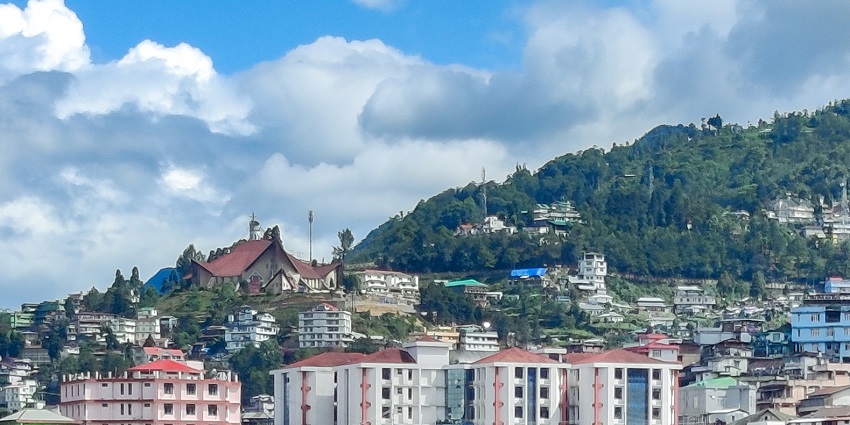
Photo: Anonymousme / Wikimedia Commons
Kohima, the heart of the Hornbill Music Festival, transforms into a vibrant musical haven during the event. The Naga Heritage Village in Kisama becomes a cultural melting pot, hosting multiple stages where artists from local, national, and international backgrounds showcase their talents, with genres ranging from rock and jazz to folk and indigenous music. Visitors exploring places to visit in Kohima can also enjoy the traditional Naga morung (youth dormitories) and the natural amphitheatre, which provide a culturally rich backdrop for performances. With its cool climate and scenic beauty, the festival offers unique things to do in Kohima, making it a must-visit destination for music lovers and travellers alike.
Timings: Usually held in December, coinciding with the main Hornbill Festival
Entry Fee: Varies based on ticket type (day passes and full festival passes available)
Suggested Read: Top Mizoram Music Festivals
2. Dimapur
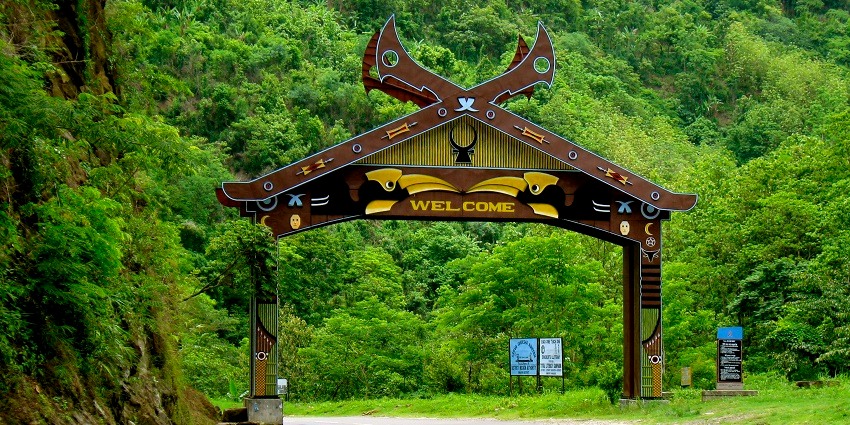
Photo: Jackpluto / Wikimedia Commons
Dimapur, Nagaland’s largest city and commercial centre, plays a crucial role in the Hornbill Music Festival by hosting pre-festival events and smaller concerts. These gatherings feature local bands and emerging artists, providing a vital platform for Nagaland’s thriving music scene. Beyond the festival, there are plenty of places to visit in Dimapur, from historical sites to vibrant local markets, offering a rich cultural experience. Festival-goers can also enjoy various things to do in Dimapur, exploring urban energy, contemporary arts, and Naga traditions, which provide a unique contrast to the more traditional settings of other festival venues.
Timings: Events usually take place in the weeks leading up to the main festival
Entry Fee: Varies by event
3. Mokokchung

Photo: Rocktim2019 / Wikimedia Commons
Mokokchung, renowned as the cultural capital of the Ao Naga tribe, occasionally participates in the Hornbill Music Festival celebrations. The town hosts cultural performances and music events that highlight the traditional music and dance forms of the Ao Nagas. Set against a backdrop of picturesque hills, Mokokchung provides visitors with an opportunity to experience authentic Naga culture in a more intimate setting. These events offer a deeper insight into the rich cultural heritage of the Ao tribe, complementing the diverse musical offerings of the main festival.
Timings: May host events around the same time as the main festival
Entry Fee: Varies by event
Suggested Read: Experience The Melodies Of Ziro Music Festival
4. Wokha
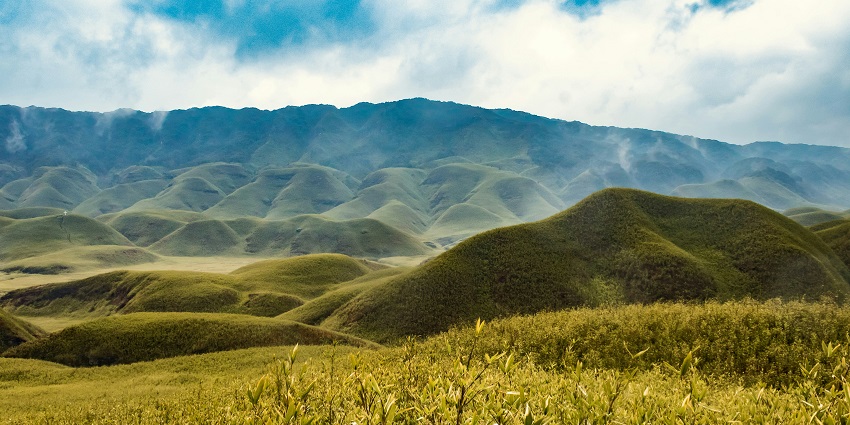
Photo: Pratham Malviya / unsplash
Wokha, home to the Lotha Naga tribe, sometimes joins the Hornbill Music Festival celebrations with its own musical events. These gatherings focus on showcasing the rich musical heritage of the Lotha people, offering visitors a chance to explore the diversity of Naga music. Surrounded by lush forests and rolling hills, Wokha provides a serene backdrop for cultural performances. The events in Wokha allow festival-goers to experience the unique sounds and traditions of the Lotha tribe, adding another layer to the cultural tapestry of the Hornbill Music Festival.
Timings: Events typically align with the main festival period
Entry Fee: Varies by event
5. Mon
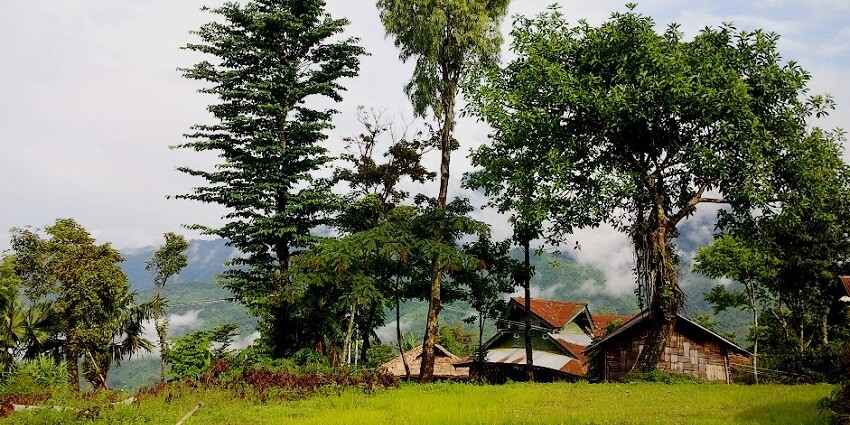
Photo: Jim Ankan Deka / Wikimedia Commons
Mon, located in eastern Nagaland, is renowned for its distinct Konyak Naga culture. During the Hornbill Festival period, Mon occasionally hosts satellite events that highlight the unique musical traditions of the Konyak tribe. These gatherings offer visitors a rare glimpse into one of Nagaland’s most traditional communities. Set against the backdrop of Mon’s rugged beauty, the events showcase the rich cultural heritage of the Konyak people through music, dance, and other art forms. This provides festival-goers with a more comprehensive understanding of Nagaland’s diverse tribal cultures.
Timings: May host events concurrent with the main festival
Entry Fee: Varies by event
Suggested Read: Everything To Know About Shillong Music Festival
6. Tuophema
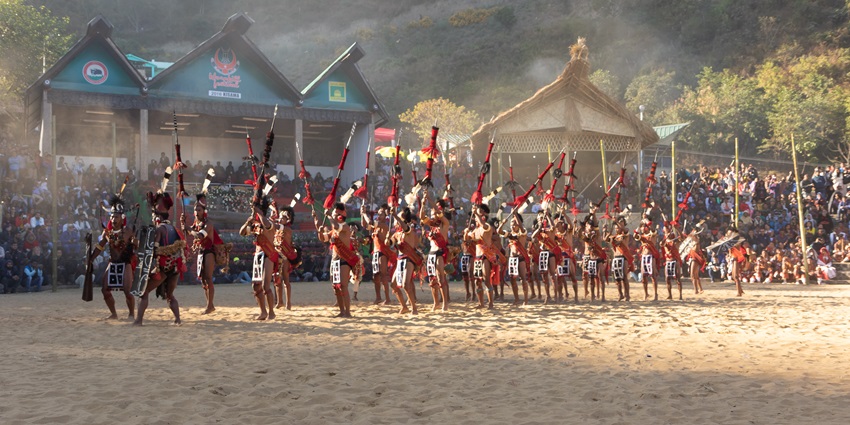
Photo: Sandeep-Bisht / Shutterstock / Image For Representation Only
Tuophema, a scenic Angami village tucked in Nagaland’s hills, offers a quieter and more personal experience of the Hornbill Festival. Here, visitors can explore traditional tribal dormitories, join heritage walks, and enjoy authentic Naga cuisine while staying in local homestays. The village presents a closer look at the Angami way of life and their customs, away from the busy Kisama venue. For travellers seeking offbeat experiences, Tuophema is among the top places to visit in Nagaland, showcasing unique hornbill festival events.
Timings: Events typically align with the main festival period
Entry Fee: Varies by event
7. Benreu
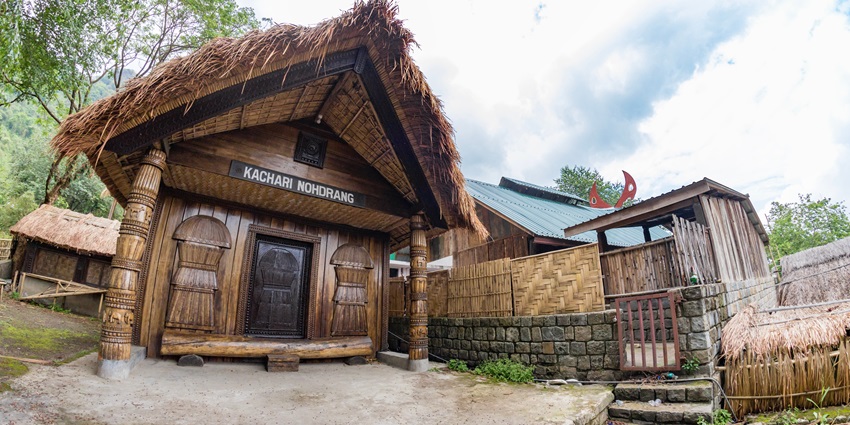
Photo: Rahul D’silva / Shutterstock / Image For Representation Only
Benreu, perched at 7,000 feet in Nagaland’s Peren district, offers a peaceful escape into tribal life. During the Hornbill Festival, this Zeliangrong village comes alive with traditional Morung displays, folk dances, and ancient hunting demonstrations. The vibrant Pauna Mountain celebrations and scenic surroundings make it ideal for travellers seeking an offbeat experience. As part of the Nagaland music festival scene, Benreu provides a unique chance to witness local culture beyond the main events at Kisama Heritage Village, creating lasting memories.
Timings: Events around the same time as the main festival
Entry Fee: Varies by event
Suggested Read: Dimapur Music Festival
Where To Stay
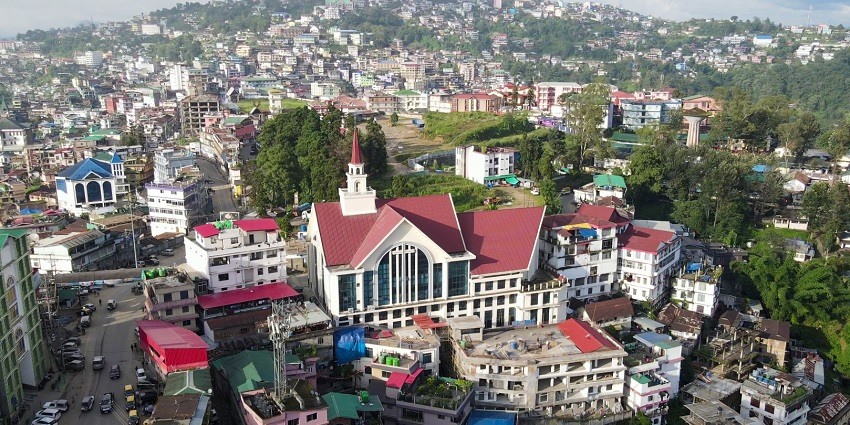
Photo: The Anonymous Earthling / Wikimedia Commons
Kohima offers a range of accommodation options to suit various preferences and budgets. For those seeking comfort, hotels like Hotel Vivor and Hotel Japfu offer good amenities and are conveniently located. Mid-range options include hotels such as The Heritage and Hotel Razhu Pru, which provide decent facilities at reasonable prices. Budget travellers can find numerous guesthouses and homestays throughout the city, offering an authentic local experience at affordable rates.
Where To Eat

Photo: jeffreyw / Wikimedia Commons / Image For Representation Only
The culinary scene during the Hornbill Music Festival is as diverse and exciting as its musical offerings. The festival grounds feature numerous food stalls serving a variety of local Naga cuisines and some continental options. This is an excellent opportunity to try traditional Naga dishes like smoked pork, axone (fermented soybean), and bamboo shoot curry. In Kohima City, visitors can explore a range of dining options, from local eateries to modern cafes.
Suggested Read: Best Foods In Guwahati
Best Time To Visit Hornbill Music Festival
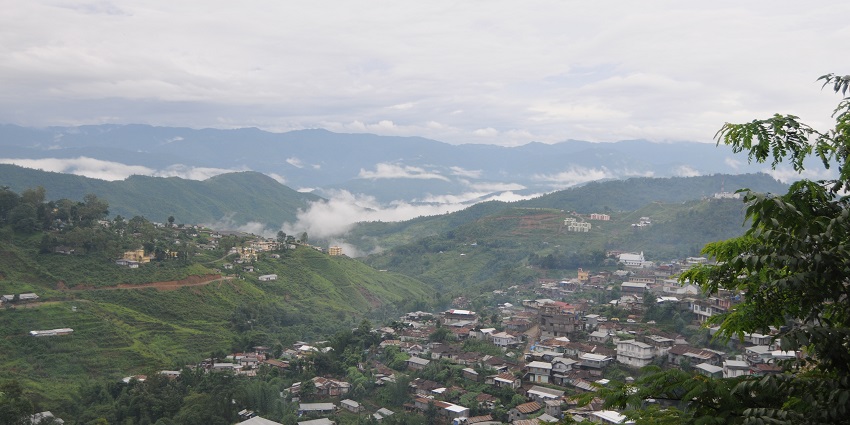
Photo: Sharad Prasad CS / Wikimedia Commons
The Hornbill Music Festival typically takes place in the first week of December, coinciding with the larger Hornbill Festival. This period offers pleasant weather with cool temperatures, making it ideal for outdoor performances and exploring the region. December in Kohima is generally dry, with clear skies, providing perfect conditions for the festival. Outside the festival dates, the best time to visit Kohima is from October to May, when the weather is mild and suitable for sightseeing and outdoor activities.
Other Factors To Consider
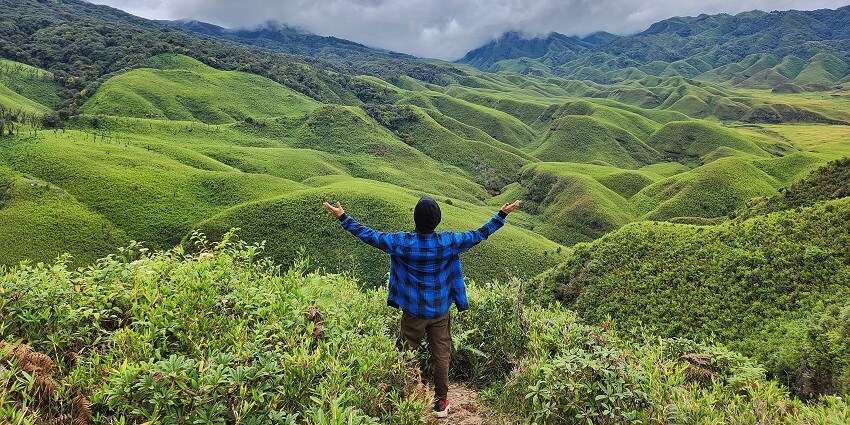
Photo: Inu Etc / Wikimedia Commons
Average Cost of the Trip: Budget travellers can expect to spend around ₹2,000-3,000 per day, including accommodation, food, and local transport. Mid-range travellers might spend ₹4,000-6,000 daily, while luxury travellers could spend ₹7,000 or more. Festival tickets are an additional cost, with prices varying based on the type of pass.
Tips for Travellers:
- Book accommodation and festival tickets well in advance, as Kohima gets very crowded during the Hornbill Festival.
- Carry warm clothing, as December evenings can be quite cold in Kohima.
- Respect local customs and traditions, especially when interacting with different Naga tribes.
- Try local dishes to experience the authentic flavours of Nagaland.
- Use local taxis or shared vehicles for transportation, as they’re familiar with the hilly terrain.
- Carry cash, as ATMs may be limited, and many vendors may not accept cards.
- Photography may be restricted in some areas, so always ask permission before taking pictures.
Suggested Read: Places To Visit In Dibrugarh, Assam
Hornbill Music Festival is a captivating fusion of music, culture, and natural splendour, offering an unforgettable experience for music enthusiasts and culture seekers alike. This immersive event not only showcases Nagaland’s rich musical heritage but also highlights the state’s stunning landscapes and warm hospitality. Plan your Hornbill Music Festival adventure today with TripXL and embark on a journey that will resonate in your heart long after the last note fades.
Cover Photo: Vikramjit Kakati / Wikimedia Commons


 WhatsApp
WhatsApp
 Twitter
Twitter









